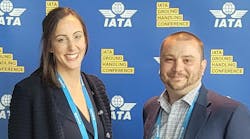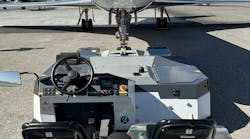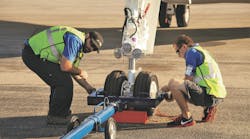PHILADELPHIA International Airport is about to spend $50 million to lengthen a runway that might be ripped up in 10 years or less.
Crazy? Aviation officials say they don't have much choice.
"Philadelphia is one of the most-delayed airports in the aviation system," said Jim Peters, spokesman for the Federal Aviation Administration. "And when you have an airport that's as significant operationally as Philadelphia, its delays create a ripple effect throughout the entire system."
Delays in takeoffs and landings at Philadelphia exceed 10 minutes now and are projected to average more than 15 minutes by the end of next year.
The 1,040-foot extension of the airport's Runway 17-35 will lengthen it to 6,500 feet, enabling it to handle smaller passenger jets like Boeing 737s, which now have to use the airport's two main runways.
The project, which will have to be done mostly at night, will require relocating part of Route 291 and will reduce delays by only a minute and 20 seconds when it's finished at the end of 2007.
Meanwhile, airport planners have developed bolder ideas to reconfigure runways and add more capacity, and one under consideration by the FAA would tear up the newly extended runway.
Philadelphia aviation director Charles Isdell says Philadelphia's preferred long-term option would keep the runway open.
"But even if it's decommissioned, it probably won't happen until 12 or 15 years into the future," Isdell said.
Change could come sooner than that, depending on the planning process.
FAA spokesman Peters said the agency's cost-benefit analysis of the runway extension assumed only seven years of use rather than the usual 20, because of prospects that a new airport configuration would scrap Runway 17-35 that soon.
"The analysis still concluded the project has a net benefit," Peters said.
But the project has skeptics, including neighbors worried about aircraft noise, and former city aviation director Fred Testa, who was fired when Mayor Street took office in 2000.
"I think it's a waste of time and money," Testa said of the runway project in an interview this week.
"They should be doing a serious master plan like the one we began. And you can bet that $50 million cost will grow to $80 million in a hurry - this is Philadelphia."
Indeed, the estimated cost of the project, originally $36 million, has already grown by $14 million.
Colorado-based aviation consultant Michael Boyd thinks the extension makes sense.
"My gut says a longer runway in-hand today is much better than a plan for something seven, eight, 10 years down the road," Boyd said.
"I've never seen a runway extension I didn't like."
But Philadelphia's judgment about runways hasn't always been the best.
In the late '90s, the airport spent $221 million on a new runway for commuter and corporate jets, but by the time it was finished, it was too short for the regional jets increasingly in use. It's now used far less than anticipated.
The planned extension for Runway 17-35 would make it long enough to handle those regional jets, and the FAA projects that if the airport doesn't do it, average delays at Philadelphia will grow to 32.4 minutes by 2015.
With heavier traffic, the extended runway is expected to lower the average delay by about 6 ½ minutes per flight to 25.9 minutes by then.
Seventy-five percent of the cost of the runway extension comes from federal aviation funds, and the rest is financed by passenger charges in effect in Philadelphia.
News stories provided by third parties are not edited by "Site Publication" staff. For suggestions and comments, please click the Contact link at the bottom of this page.





